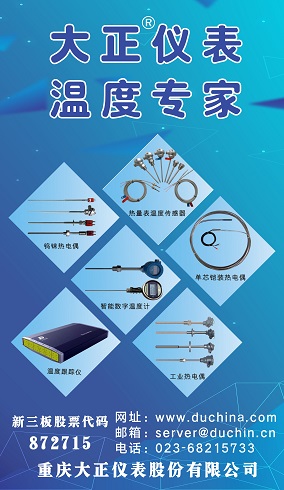作者:王靖宵1,2, 贾月梅1, 冀健龙2
作者单位:1. 太原理工大学机械与运载工程学院, 山西 太原 030024;
2. 太原理工大学信息与计算机学院微纳系统研究中心, 山西 太原 030024
关键词:摩擦发电效应;微流体;传感器;有限元方法
摘要:
近年来,摩擦发电技术被广泛应用于信号传感领域,尤其是对封闭管道中液体输运的信号监测。为阐释基于摩擦发电效应的微流体传感器的工作原理,通过有限元仿真模拟,研究这种微流体传感器的信号产生过程及其传感特性,并通过实验测得该传感器在检测微流体运动时输出的交流电信号,验证仿真模型的正确性。另外在仿真模拟中,通过控制变量法,探讨基于摩擦发电效应的微流体传感器的传感性能随介电层厚度、电极间距及液体长度与电极宽度之比的变化规律。结果表明这种微流体传感器的输出信号强度随介电层厚度的增大而减小,而随电极间距的增大表现出先增大后减小的趋势,随液体长度与电极宽度的比值变化呈先增大后保持恒定的变化规律,该项研究工作将为研制更高传感性能的微流体传感器提供一定理论指导。
Finite element simulation study on sensing characteristics of triboelectric microfluid sensors
WANG Jingxiao1,2, JIA Yuemei1, JI Jianlong2
1. College of Mechanical and Vehicle Engineering, Taiyuan University of Technology, Taiyuan 030024, China;
2. Micro-Nano System Research Center, College of Information and Computer, Taiyuan University of Technology, Taiyuan 030024, China
Abstract: In recent years, triboelectric technology has been widely used in the field of signal sensing, especially for signal monitoring of liquid transport in closed pipelines. In order to explain the working principle of microfluid sensors based on the triboelectric effect, the process generating the signal and sensing characteristics of microfluid sensors based on triboelectric effect were studied by finite element method. And the current signal outputs by detecting microfluid motion was studied through experiments to verify the correctness of the simulation. Based on the control variable method, the variation of performance of the microfluid sensor with the thickness of the dielectric layer, the distance between the electrodes, and the ratio of the liquid length to the electrode width was studied. The results show that the intensity of the output signal of the microfluid sensor decreases with the increase of the thickness of the dielectric layer, yet show a tendency of increasing and then decreasing with the increases of the distance between the electrodes. In addition, the output signal increases and then remains unchanged with the ratio of the liquid length to the electrode width increased. This work will provide some theoretical guidance for the development of microfluid sensors with higher sensing performance.
Keywords: triboelectric effect;microfluid;sensor;finite element method
2020, 46(6):89-94 收稿日期: 2020-01-15;收到修改稿日期: 2020-03-03
基金项目: 国家自然科学基金重点支持项目(51705354);山西省高等学校科技创新项目(183290224-S)
作者简介: 王靖宵(1996-),男,山西运城市人,硕士研究生,专业方向为流体力学
参考文献
[1] HANCKE G, SILVA B, HANCKE J G. The role of advanced sensing in smart cities[J]. Sensors, 2013, 13(1): 393-425
[2] QI J, YANG P, WARAICH A, et al. Examining sensor-based physical activity recognition and monitoring for healthcare using Internet of Things: A systematic review[J]. Journal of Biomedical Informatics, 2018, 87: 138-153
[3] WANG X, ZHANG H, DONG L, et al. Self-powered high-resolution and pressure-sensitive triboelectric sensor matrix for real-time tactile mapping[J]. Advanced Materials, 2016, 28(15): 2896-2903
[4] ZHANG X S, HAN M D, WANG R X, et al. Frequency-multiplication high output triboelectric nanogenerator for sustainably powering biomedical microsystems[J]. Nano Lett, 2013, 13(3): 1168-1172
[5] MENG B, TANG W, TOO Z H, et al. A transparent single-friction-surface triboelectric generator and self-powered touch sensor[J]. Energy & Environmental Science, 2013, 6(11): 3235-3240
[6] SHEN G P, QIN M, HUANG Q A. A cross-type thermal wind sensor with self-testing function[J]. Ieee Sensors Journal, 2010, 10(2): 340-346
[7] LIN Z H, CHENG G, LEE S, et al. Harvesting water drop energy by a sequential contact-electrification and electrostatic-induction process[J]. Adv Mater, 2014, 26(27): 4690-4696
[8] ZHU G, SU Y, BAI P, et al. Harvesting water wave energy by asymmetric screening of electrostatic charges on a nanostructured hydrophobic thin-film surface[J]. Acs Nano, 2014, 8(6): 6031-6037
[9] 孙雄飞, 郭建生, 张志, 等. 摩擦发电装置制备与分析[J]. 产业用纺织品, 2018, 36(4): 23-29
[10] YARALIOGLU G G, ATALAR A, MANALIS S R, et al. Analysis and design of an interdigital cantilever as a displacement sensor[J]. Journal of Applied Physics, 1998, 83(12): 7405-7415
[11] LANTZ M A, BINNIG G K, DESPONT M, et al. A micromechanical thermal displacement sensor with nanometre resolution[J]. Nanotechnology, 2005, 16: 1089-1094
[12] MILLER M M, PRINZ G A, LUBITZ P, et al. Novel absolute linear displacement sensor utilizing giant magnetoresistance elements[J]. Journal of Applied Physics, 1997, 81(8): 4284-4286
[13] YANG Y, ZHOU Y, WU J M, et al. Single micro/nanowire pyroelectric nanogenerators as self-powered temperature sensors[J]. Acs Nano, 2012, 6(9): 8456-8461
[14] 李建伟. 摩擦起电现象略解[J]. 职大学报, 1998, 4: 65-66
[15] WANG Z L, WU W. Nanotechnology enable energy har-vesting for self-powered micro-/nanosystems[J]. Angewandte Chemie, 2012, 51(47): 11700-11721
[16] WANG Z L. Triboelectric nanogenerators as new energy technology and self-powered sensors-Principles, problems and perspectives[J]. Faraday Discussions, 2014, 176: 447-458
[17] WANG Z L, JIANG T, XU L. Toward the blue energy dream by triboelectric nanogenerator networks[J]. Nano Energy, 2017, 39: 9-23
[18] PAN L, WANG J, WANG P, et al. Liquid-FEP-based U-tube triboelectric nanogenerator for harvesting water-wave energy[J]. Nano Research, 2018, 11: 4062-4073
[19] 张玉麒, 常奇峰, 赵冰. 复合微纳米发电技术概述[J]. 黑龙江科技信息, 2015, 26: 61-62
[20] LIN Z H, ZHU G, ZHOU Y S, et al. A self-powered triboelectric nanosensor for mercury ion detection[J]. Angewandte Chemie, 2013, 52(19): 5065-5069
[21] YANG Y, LIN L, ZHANG Y, et al. Self-powered magnetic sensor based on a triboelectric nanogenerator[J]. Acs Nano, 2012, 6(11): 10378-10383
[22] YANG Y, ZHANG H, CHEN J, et al. Single-electrode-based sliding triboelectric nanogenerator for self-powered displacement vector sensor system[J]. Acs Nano, 2013, 7(8): 7342-7351
[23] SU Y, ZHU G, YANG W, et al. Triboelectric sensor for self-powered tracking of object motion inside tubing[J]. Acs Nano, 2014, 8(4): 3843-3850
[24] WANG J, ZHANG H, XIE X, et al. Water energy harvesting and self-powered visible light communication based on triboelectric nanogenerator[J]. Energy Technology, 2018, 6(10): 1929-1934
[25] ROH H, YU J, KIM I, et al. Dynamic analysis to enhance the performance of a rotating-disk-based triboelectric nanogenerator by injected gas[J]. ACS Appl Mater Interfaces, 2019, 11(28): 25170-25178
[26] 邱宇, 裴俊乐, 杨德超, 等. 基于COMSOL模拟的球形摩擦纳米发电机的发电特性[J]. 物理实验, 2017, 37(9): 1-5, 11
[27] HOU G N, WANG J, LAYTON A. Numerical methods for fluid-structure interaction — A review[J]. Communications In Computational Physics, 2012, 12(2): 337-377
[28] VARGHESE S, SHAFEEK S, KUMAR R S, et al. Computational investigation of material combinations in triboelectric generators[C]//2017 International Conference on Electrical and Computing Technologies and Applications (ICECTA). IEEE, 2017: 476-479.




